Team Xtreem DDR3-2000 3GB Triple Channel RAM Kit Review
Team Xtreem DDR3-2000 3GB Triple Channel RAM Kit
It's certainly got the name but does it have the performance
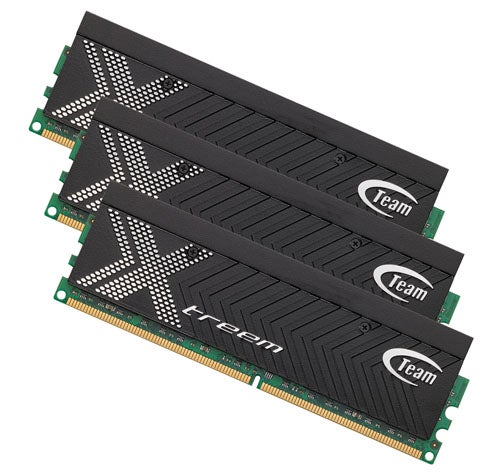
Verdict
Key Specifications
- Review Price: £172.44
This week we’re reviewing a triple channel DDR3 memory kit from Team Group, which is a brand that is new to us so hopefully it’s new to you too.
In appearance the Xtreem modules look rather understated with eight memory chips on one side of the green PCB, a black aluminium heat spreader glued on top and the whole thing topped off with a shiny X logo. Thankfully we’re more interested in the specification of the hardware than we are with the styling and Team Group has scored heavily in this department.
This is a triple module kit made for use in Intel Core i7 systems. There’s 1GB of memory on each module to give a total of 3GB. It would be rash to say that 3x1GB kits are heading for the endangered list but most of the good DDR3 that we have seen recently does come in 2GB modules. The point here is that you need to run a 64-bit Operating System if you want to get the benefit of more than 4GB of RAM so you need to make a fairly major decision if you fancy switching from 3GB of RAM to 6GB. We have no doubt that 64-bit is the way to go in the future but we’re not convinced that it is a necessary choice today.
The other key features of the Xtreem memory include its low working voltage of 1.65V however this is a necessary feature of all Core i7 memory as the memory controller is in the processor core instead of the chipset. The default voltage setting for Core i7 is 1.5V with a maximum of 1.65V and if you go any higher your expensive Core i7 processor may vanish in a cloud of smoke so the range of operation is quite tight.
When it comes to clock speed, Team Xtreem is shooting for the stars as the maximum rated speed is 2,000MHz and in addition it also offers low latency. There is a fair selection of DDR3-2000 on the market but most of it has latencies of 9-9-9-30 or 10-10-10-30. Some models are a touch quicker at 9-9-9-24 and pretty much the best we can find on sale is G.Skill which runs at 8-8-8-21 so the 7-8-7-20 latencies offered by the Team Xtreem are impressively low.
We built a test system using an Asus P6T SE motherboard, a Core i7 965 Extreme processor that was lightly overclocked to 3.72GHz, a Radeon HD 4890 graphics card and an Intel X25-M SSD with Windows Vista Ultimate Edition loaded on it.
We didn’t waste time running the Xtreem memory at 1,066MHz or 1,333MHz but instead jumped in at 1,600MHz. The SPD settings for the Xtreem are quite patchy and only include settings for 888MHz, 1,200MHz and 1,33MHz on 1.5V as well as 2,000MHz on 1.65V. We have no idea why Team Group bothered with a setting for 888MHz and neither can we see why they ignored the more common 1,600MHz or 1,866MHz speeds so it came as little surprise that the BIOS in the Asus P6T SE came up with its own settings and plumped for 9-9-9-24-1T. We used these latencies for our first test run on the standard 1.5V setting and the memory behaved perfectly. For our second run we increased the voltage to 1.65V which can sometimes help stability but it made little difference in this case and then we pulled the latencies down to 7-8-7-20-2T to match the factory specification. This turned out to be a backwards step as the system performance in PCMark05 slowed slightly despite seeing an increase in memory bandwidth in SiSoft Sandra and a reduction in latency.
We increased the memory speed to 1,866MHz with the same latency settings and the system refused to POST until we increased the QPI/RAM voltage setting from a middling 1.3V to a high 1.5V which made the system stable once again. Although performance improved in the Memory element of PCMark05 we didn’t see an overall benefit from the higher clock speed. We took a punt and dropped the Command Rate from 2T to 1T and immediately saw a useful improvement in our benchmark score. Naturally we would have liked to run the Xtreem at the full 2,000MHz speed but unfortunately this isn’t an option with the Asus P6T SE as the BIOS doesn’t support DDR3-2000 but instead jumps from 1,866MHz to 2,133MHz and the system simply would not POST at that speed.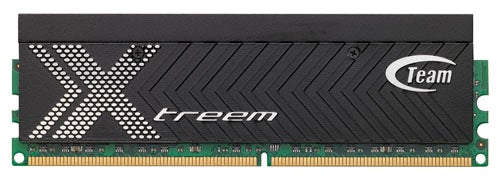
The extreme DDR3-2000 had impressed us but we needed a reference point and by chance we had some OCZ Blade DDR3-2000 on the test bench. This is a 3x2GB kit that operates on the same 7-8-7-20 latencies as the Team Extreem and, as it costs £279 for 6GB, it appears to represent better value for money.
Once again we dived in at 1,600MHz and saw test results that trailed the Team Extreem by a narrow margin, both in terms of bandwidth and also in PCMark05. Raising the speed from 1,600MHz to 1,866MHz increased performance but it wasn’t enough to close the gap on the Team Extreem memory.
We saw good results when we reduced the Command Rate with the Team Extreem memory so we tried the same trick with the OCZ Blade but this time the performance did not increase. In fact it was swings and roundabouts as we saw an increase in the Memory section of PCMark05 and a decrease in the Overall result.
Based on these results we would have to give the Team Extreem DDR3-2000 the thumbs up despite its high price however we have a word of caution. From what we’ve seen with Core i7 it doesn’t respond especially well to increased memory speed, very likely because the triple channel memory controller provides so much bandwidth that memory speed makes little difference.
”’Verdict”’
Team Group has come up with some blazingly fast DDR3-2000 memory but the extra clock speed doesn’t yield the sort of performance that you might hope to see and the price is quite high.
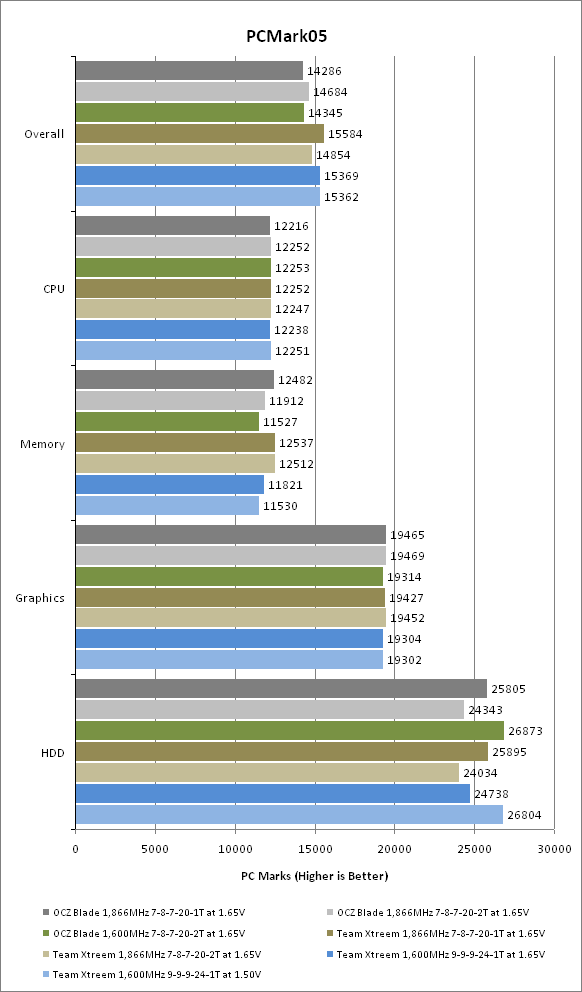
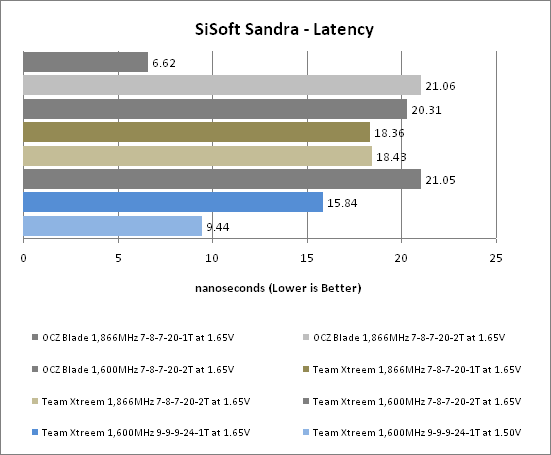
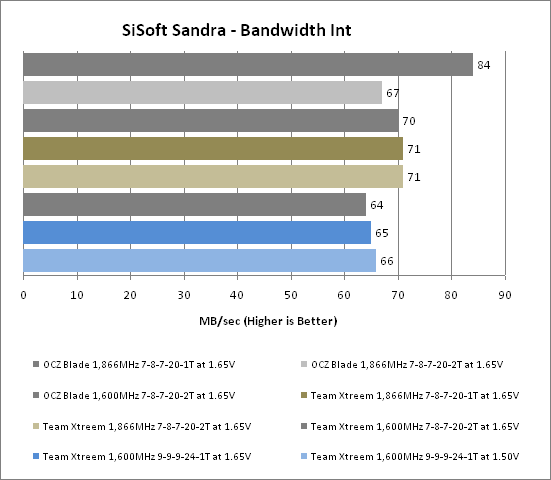
Trusted Score
Score in detail
-
Value 6
-
Performance 9

